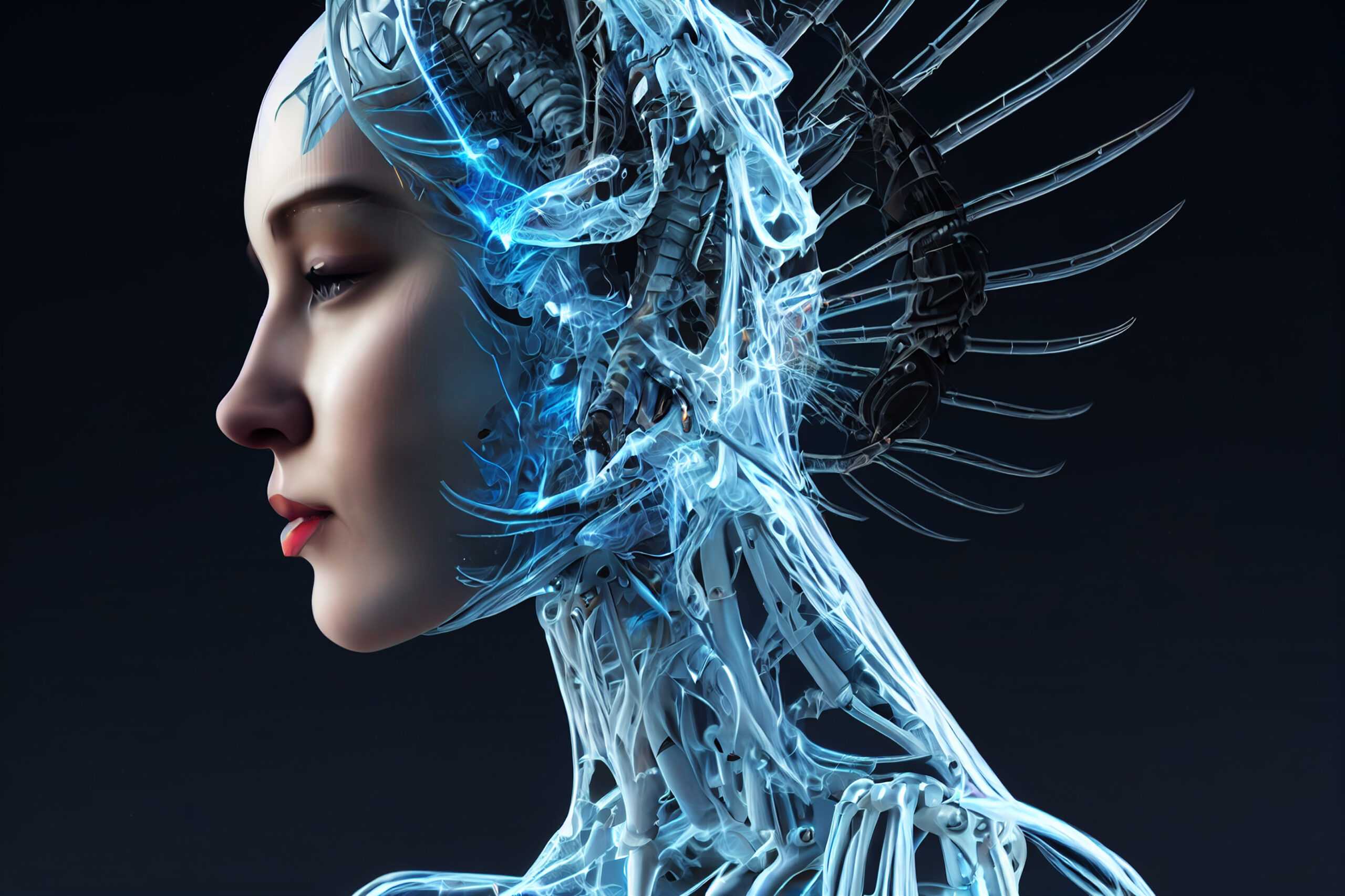
AI vs. Machine Learning: Key Differences
clever reads
As a seasoned blogger, I’ve had my fair share of experiences in the tech world. Today, I want to delve into a topic that often sparks confusion among many: “AI vs. Machine Learning: Key Differences.” Let’s unravel the intricacies of these two terms and explore how they shape the tech landscape.
Understanding AI and Machine Learning
Before we dive into the differences, let’s start by breaking down what AI (Artificial Intelligence) and Machine Learning truly mean:
AI Defined
Artificial Intelligence, or AI, has always fascinated me. It’s all about creating computer systems that can mimic human intelligence. Think problem-solving, decision-making, understanding natural language, and recognizing patterns—the whole cognitive package.
Machine Learning Explained
Now, Machine Learning, or ML, is a subset of AI that particularly piques my interest. It focuses on developing algorithms and statistical models that enable computers to get better at specific tasks over time. How? By learning from data. It’s like the computer is going to school, but instead of textbooks, it uses datasets.
The Fundamental Differences
Let’s get to the crux of the matter: the fundamental distinctions between AI and Machine Learning.
AI’s Breadth vs. ML’s Depth
AI is like a Renaissance person—it covers a wide range of tasks across various domains. Machine Learning, on the other hand, is more specialized, like a seasoned expert honing their craft in a specific field.
Human Imitation vs. Data-Driven
AI’s goal is to imitate human intelligence, often relying on reasoning and decision-making processes. Meanwhile, Machine Learning is all about data, learning from it, and making predictions or decisions based on what it finds.
Supervision Level
AI can operate with or without human intervention, depending on how it’s designed. Machine Learning, though, needs humans to guide it through training and optimization. It’s like having a mentor in the form of data.
Adaptability
When it comes to adaptability, Machine Learning takes the cake. It can easily adapt and improve its performance with more data, making it quite the chameleon in the tech world. AI, on the other hand, tends to be less flexible and requires extensive programming for new tasks.
Learning Capacity
AI often has a fixed knowledge base, kind of like an encyclopedia that doesn’t get updated regularly. Machine Learning models, on the other hand, are like sponges, always soaking up new knowledge with each data input.
AI vs. Machine Learning: A Historical Perspective
Now that we’ve established the basics, let’s journey through the history of AI and Machine Learning:
AI’s Early Beginnings
The story of AI dates back to ancient times when myths spoke of intelligent machines. But its formalization as a field started in the 1950s with the Turing Test and early computer programs. It’s fascinating to see how human imagination laid the foundation for today’s AI.
ML’s Emergence
Machine Learning, on the other hand, made its debut in the mid-20th century. It started with a focus on pattern recognition and decision-making. Back then, the computational power needed for ML was just taking shape, opening doors to new possibilities.
Convergence and Divergence
In their early days, AI and ML were like two peas in a pod. AI researchers were keen on exploring ML techniques. However, over time, ML branched out as a separate discipline within AI, with a dedicated focus on data-driven learning.
AI and Machine Learning in Practice
Now that we’ve laid the historical groundwork, let’s see how AI and Machine Learning are making waves in the real world:
Use Cases of AI
Natural Language Processing (NLP)
AI has its fingerprints all over NLP, from chatbots and virtual assistants like Siri to language translation services. It’s like having a personal language expert at your fingertips.
Computer Vision
When it comes to recognizing faces and analyzing images and videos, AI takes center stage. It’s the technology behind facial recognition and surveillance systems, making the world a safer place.
Robotics
AI’s influence extends to robotics, where autonomous robots are revolutionizing manufacturing and logistics. Imagine robots working side by side with humans on the factory floor—truly mind-boggling!
Gaming
If you’re a gamer like me, you’ll appreciate AI’s role in creating intelligent opponents and NPCs in video games. It’s like having a dynamic, ever-evolving virtual world to explore.
Use Cases of Machine Learning
Recommendation Systems
Machine Learning shines in recommendation systems, making your Netflix binge-watching sessions all the more enjoyable. It’s like having a personal movie critic who knows your tastes inside out.
Predictive Analytics
ML’s predictive prowess isn’t limited to weather forecasts. It’s also the magic behind stock price predictions and disease outbreak forecasts. Imagine having a crystal ball that’s data-powered.
Autonomous Vehicles
Self-driving cars are the epitome of ML’s impact. Algorithms navigate these vehicles, making road trips a breeze. It’s like having a co-pilot that never gets tired.
Fraud Detection
In the world of finance, ML is the guardian against fraud. It’s like having a super sleuth who can spot suspicious transactions in a sea of data.
The Role of Data
Both AI and Machine Learning thrive on data, but they use it in different ways:
AI and Data
AI sees data as a knowledge base, using it as a reference point for decision-making and problem-solving. It’s like having a massive library of information at its disposal.
Machine Learning and Data
For Machine Learning, data isn’t just information—it’s fuel. ML models feed on data to learn, adapt, and make predictions. It’s like a never-ending buffet of knowledge that keeps getting better.
The Learning Process
The way AI and Machine Learning learn is a key differentiator:
AI’s Learning Process
AI systems have a fixed knowledge base and don’t learn from data. They rely on pre-programmed rules and logic, like an actor following a script.
Machine Learning’s Learning Process
Machine Learning models are like eager students. They learn from data patterns and adjust their algorithms accordingly. The more data they get, the smarter they become.
Algorithms in AI and Machine Learning
Algorithms are the heart and soul of both AI and Machine Learning:
AI Algorithms
AI relies on rule-based algorithms to make decisions. These algorithms are designed to replicate human thought processes, like following a recipe in the kitchen.
ML Algorithms
Machine Learning embraces a wide array of algorithms, from decision trees to neural networks. These algorithms enable ML models to spot patterns and make predictions, like a detective solving a mystery.
Accuracy and Precision
Precision and accuracy are of utmost importance, but they take slightly different forms in AI and Machine Learning:
AI’s Focus on Precision
AI systems prioritize precision in decision-making, aiming for low error rates. It’s like a sharpshooter hitting the bullseye every time.
ML’s Emphasis on Accuracy
Machine Learning models, on the other hand, focus on overall accuracy. They might tolerate a bit of imprecision here and there to achieve higher accuracy on the whole, like a marksman hitting the target consistently.
Automation and Decision-Making
Automation and decision-making highlight another contrast:
AI’s Automation
AI automates tasks that require human-like intelligence, often making complex decisions independently. It’s like having a reliable personal assistant who knows your preferences inside out.
ML’s Decision Support
Machine Learning acts as a decision support system, providing valuable insights and data-driven guidance to human decision-makers. It’s like having a trusted advisor by your side.
Scalability and Adaptability
Let’s talk scalability and adaptability:
AI’s Limited Scalability
AI systems are less scalable, often requiring extensive reprogramming to take on new tasks. They excel in specific applications but might struggle beyond that comfort zone.
ML’s Scalability and Adaptability
Machine Learning models are like elastic—they can stretch and adapt easily. Add more data, and they become more proficient. They’re versatile, capable of taking on various challenges.
Common Misconceptions
Misconceptions are part of the game. Let’s clear some up:
Misconception 1: AI and ML Are the Same
It’s a common mix-up, but AI and ML aren’t identical twins. They’re more like cousins with overlapping interests but distinct personalities.
Misconception 2: AI Is Infallible
AI isn’t infallible. It can make mistakes, especially in complex and unpredictable situations. It’s like a chess grandmaster occasionally losing a game.
Misconception 3: ML Requires No Human Involvement
Machine Learning might seem autonomous, but it relies heavily on human guidance, from data labeling to fine-tuning models. It’s like teaching a dog new tricks—it needs your guidance.
The Future of AI and Machine Learning
As a blogger who thrives on staying ahead of the curve, I’m excited about what the future holds for AI and Machine Learning:
Advancements in AI
AI is poised to make leaps in natural language understanding, ushering in more human-like interactions. Its integration into various industries will continue to expand, offering innovative solutions.
ML’s Evolution
Machine Learning is on a path of continuous evolution. Breakthroughs in deep learning and reinforcement learning are on the horizon, promising increased automation and predictive capabilities.
Ethical Considerations
With great power comes great responsibility. Here are some ethical considerations in the world of AI and Machine Learning:
Bias and Fairness
AI and ML models can inherit biases from their training data, leading to unfair outcomes. Ethical frameworks are emerging to tackle bias and ensure fairness in decision-making.
Privacy and Security
The use of AI in surveillance and data analysis raises concerns about privacy and security. Striking a balance between innovation and protecting individual privacy is a critical challenge.
AI vs. Machine Learning in Business
Now, let’s see how AI and Machine Learning are making their mark in the business world:
AI in Business
AI streamlines operations by automating routine tasks, reducing costs, and enhancing efficiency. It’s like having a dedicated workforce of AI assistants at your beck and call.
Machine Learning in Business
Machine Learning empowers data-driven decision-making, helping businesses identify trends and seize opportunities. It’s like having a crystal ball that predicts market movements.
AI vs. Machine Learning in Healthcare
The healthcare sector is a prime beneficiary of AI and Machine Learning:
AI in Healthcare
AI aids in diagnosing diseases through medical imaging analysis, bringing accuracy to a whole new level. It’s like having a medical Sherlock Holmes on the case.
Machine Learning in Healthcare
Machine Learning predicts patient outcomes and personalizes treatment plans, revolutionizing patient care. It’s like having a medical advisor who tailors treatments just for you.
AI vs. Machine Learning in Finance
Finance and banking are not immune to the AI and Machine Learning wave:
AI in Finance
AI automates financial transactions and detects fraudulent activities with precision. It’s like having a financial guardian angel who watches over your money.
Machine Learning in Finance
Machine Learning models assess credit risk and predict market trends, guiding investment decisions. It’s like having a financial guru who advises you on where to invest.
AI vs. Machine Learning in Education
Education, too, is experiencing a transformation thanks to AI and Machine Learning:
AI in Education
AI-driven personalized learning platforms adapt to students’ needs, making education more engaging and effective. It’s like having a personal tutor who knows your strengths and weaknesses.
Machine Learning in Education
Machine Learning analyzes student performance data to identify areas for improvement. It’s like having an educational detective who uncovers the keys to success.
AI vs. Machine Learning in the Automotive Industry
The automotive industry is embracing AI and Machine Learning with open arms:
AI in the Automotive Industry
AI powers self-driving car technology, enhancing safety and convenience on the road. It’s like having a trusty co-pilot who ensures you reach your destination safely.
Machine Learning in the Automotive Industry
Machine Learning predicts vehicle maintenance needs, reducing breakdowns and maintenance costs. It’s like having a car mechanic who knows when your vehicle needs attention.
AI vs. Machine Learning in Entertainment
Entertainment gets a dose of AI and Machine Learning magic:
AI in Entertainment
AI-generated content, from music to art, unlocks new creative possibilities. It’s like having an AI muse that inspires your artistic endeavors.
Machine Learning in Entertainment
Machine Learning algorithms analyze audience preferences, shaping content creation. It’s like having a personal entertainment curator who knows your taste.
AI vs. Machine Learning in Customer Service
Customer service gets a tech upgrade with AI and Machine Learning:
AI in Customer Service
AI-driven chatbots offer instant responses to customer inquiries, making support more efficient. It’s like having a helpful assistant who’s available 24/7.
Machine Learning in Customer Service
Machine Learning models analyze customer behavior, providing personalized recommendations. It’s like having a virtual shopping assistant who knows your style.
AI vs. Machine Learning in Agriculture
Even agriculture is reaping the benefits of AI and Machine Learning:
AI in Agriculture
AI monitors crop health and optimizes irrigation systems, promoting sustainability. It’s like having a virtual farmer who tends to your fields with precision.
Machine Learning in Agriculture
Machine Learning predicts crop yields and identifies disease outbreaks, ensuring bountiful harvests. It’s like having a crop whisperer who anticipates your crops’ needs.
Conclusion
In wrapping up this exploration of AI vs. Machine Learning, it’s clear that while they share some common ground, their differences are substantial. AI aims to replicate human intelligence across diverse domains, while Machine Learning specializes in data-driven learning for specific tasks. As a seasoned blogger, I hope this deep dive into the world of AI and Machine Learning has shed light on these fascinating technologies. They continue to shape our world, offering innovative solutions and transforming industries.
Frequently Asked Questions (FAQs)
The main difference is that AI (Artificial Intelligence) aims to replicate human intelligence broadly, covering various tasks that require human-like reasoning, decision-making, and understanding. In contrast, Machine Learning (ML) is a subset of AI that specializes in improving its performance on specific tasks through data analysis and learning.
AI uses data as a knowledge base, referring to it for decision-making and problem-solving, whereas Machine Learning requires data for training and optimization. ML models learn from data patterns and use this knowledge to make predictions or decisions.
AI systems can be designed to operate with or without human intervention, depending on their purpose and complexity. Some AI systems, like chatbots, can operate independently, while others may require human supervision.
Machine Learning models are highly adaptable because they continuously learn and improve with more data. This adaptability allows them to take on new tasks and challenges without significant modifications.
AI systems have a fixed knowledge base and don’t learn from data. They rely on pre-programmed rules and logic. In contrast, Machine Learning models learn from data patterns and adjust their algorithms, becoming more proficient with additional data.
AI primarily uses rule-based algorithms designed to replicate human thought processes. Machine Learning employs a wide range of algorithms, including decision trees, neural networks, and clustering algorithms, enabling it to recognize patterns and make predictions.
AI systems prioritize precision in decision-making, aiming for low error rates and being risk-averse. In contrast, Machine Learning models focus on overall accuracy, sometimes tolerating minor imprecision to achieve higher accuracy overall.
AI automates tasks that require human-like intelligence and often operates independently, making complex decisions. Machine Learning, on the other hand, serves as a decision support system, providing data-driven insights to assist human decision-makers.
Yes, both AI and Machine Learning models can inherit biases from their training data. This bias can lead to unfair outcomes. Efforts are being made to develop ethical frameworks and techniques to address and mitigate bias in AI and ML.
AI finds applications in natural language processing, computer vision, robotics, gaming, and more. Machine Learning is used in recommendation systems, predictive analytics, autonomous vehicles, fraud detection, and various other domains.
The future looks promising for both AI and Machine Learning. AI is expected to advance in natural language understanding and expand its integration into various industries. Machine Learning will continue to evolve with breakthroughs in deep learning and reinforcement learning, enabling increased automation and predictive capabilities.
Ethical concerns, such as bias and privacy, can be addressed through responsible data collection and labeling, algorithmic transparency, and the development of ethical guidelines and regulations. Collaboration between experts in ethics and technology is essential to ensure responsible AI and ML development.
We're your gateway to thought-provoking content, insightful analysis, and engaging storytelling. We believe in the power of information to shape the world and enrich lives.



